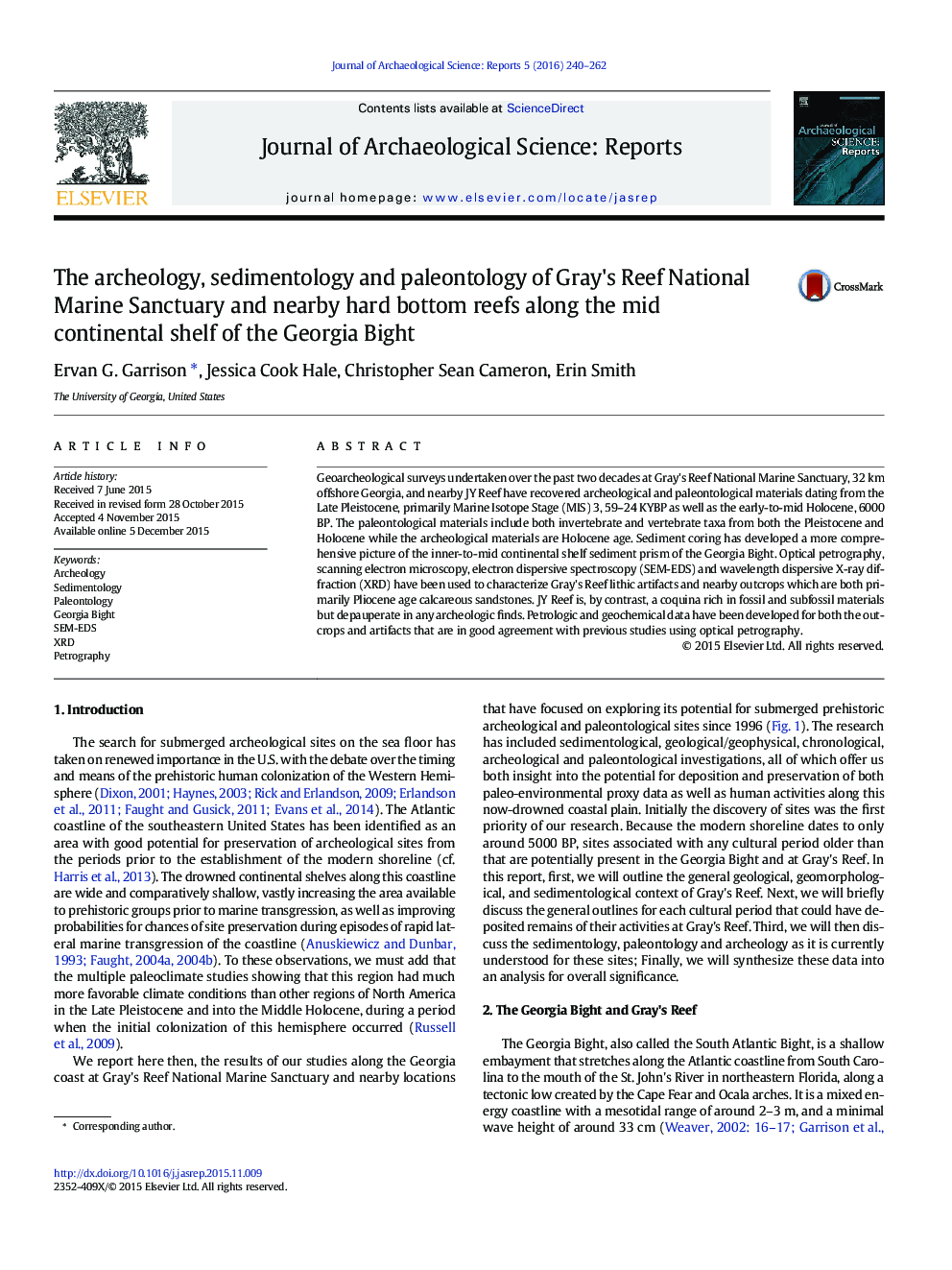| Article ID | Journal | Published Year | Pages | File Type |
|---|---|---|---|---|
| 7446033 | Journal of Archaeological Science: Reports | 2016 | 23 Pages |
Abstract
Geoarcheological surveys undertaken over the past two decades at Gray's Reef National Marine Sanctuary, 32Â km offshore Georgia, and nearby JY Reef have recovered archeological and paleontological materials dating from the Late Pleistocene, primarily Marine Isotope Stage (MIS) 3, 59-24Â KYBP as well as the early-to-mid Holocene, 6000 BP. The paleontological materials include both invertebrate and vertebrate taxa from both the Pleistocene and Holocene while the archeological materials are Holocene age. Sediment coring has developed a more comprehensive picture of the inner-to-mid continental shelf sediment prism of the Georgia Bight. Optical petrography, scanning electron microscopy, electron dispersive spectroscopy (SEM-EDS) and wavelength dispersive X-ray diffraction (XRD) have been used to characterize Gray's Reef lithic artifacts and nearby outcrops which are both primarily Pliocene age calcareous sandstones. JY Reef is, by contrast, a coquina rich in fossil and subfossil materials but depauperate in any archeologic finds. Petrologic and geochemical data have been developed for both the outcrops and artifacts that are in good agreement with previous studies using optical petrography.
Related Topics
Social Sciences and Humanities
Arts and Humanities
History
Authors
Ervan G. Garrison, Jessica Cook Hale, Christopher Sean Cameron, Erin Smith,
